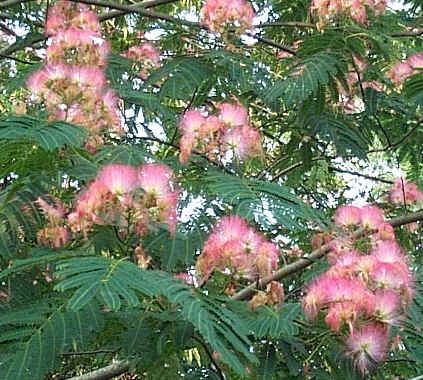Any tree that shares it name with a delicious brunch beverage should be great. Alas, the Mimosa Tree (Albizia julibrissin) is the exact opposite of great.
Brought to the United States as an ornamental tree from Asia and Africa, the Mimosa Tree's ability to reproduce vigorously has allowed it to spread unchecked across eastern and southwestern states. The seeds, which are produced in abundance and long-lived are dispersed by animals and water. Mimosa trees go rapidly under good conditions but have week, brittle wood and are short-lived. They resprout quickly if cut or top-killed.
Since the Mimosa Tree prefers full sun you will frequently see them along roadsides, in open vacant lots, up against but not in forests and on riparian areas.
Yes, the Mimosa Tree is an attractive tree but just as you should do when dating, go for the good personality. Visit our website for a list of trees that do well in DC.
The Mimosa Tree does NOT qualify for the $50 Tree Rebate.
______________________________________________________
Mimosa Tree 101
- Grows 20-40 feet tall
- Bark is thin and almost smooth
- Multi-part leaves like a fern; green; no fall color change
- Produces fragrant pink flowers between May and July








